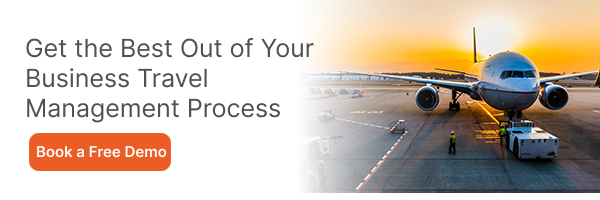
As travel needs change and rules evolve, travel administrators face more tasks with limited resources. Managing multiple itineraries, coordinating with different people, and keeping up with policy changes make their job even tougher. Plus, doing things manually means mistakes and delays are common, making their workload heavier.
That’s why companies must help travel admins work more efficiently. By simplifying processes, using technology, and giving them the right tools, companies can help travel admins handle their workload better. This makes things run smoother, makes travel better for everyone, and helps the company save money.
This blog highlights travel admins’ challenges and how they can enhance their productivity.
Challenges Faced by Travel Administrators
Travel administrators encounter numerous challenges stemming from the manual methods utilized in corporate travel management. These methods lack the efficiency and agility required to keep up with the dynamic nature of travel arrangements and regulatory requirements.
As a result, travel administrators often find themselves overwhelmed and unable to meet the organization’s evolving needs in an increasingly complex travel landscape. Some of the major challenges include:
- Manual Data Entry: The reliance on manual data entry processes can be time-consuming and prone to errors, leading to discrepancies in travel itineraries and expense reports.
- Fragmented Systems: Using multiple, disconnected systems for travel booking, expense management, and itinerary tracking can lead to inefficiencies and difficulties in managing travel-related tasks.
- Lack of Automation: The absence of automation in travel administration processes results in repetitive tasks, such as data entry and itinerary creation, consuming valuable time and resources.
- Complex Policies: Complex travel policies and guidelines can be challenging to enforce and adhere to, leading to confusion and frustration for administrators and travelers.
- Communication Challenges: Inadequate communication channels and tools can hinder effective communication between travelers, administrators, and travel agencies, leading to delays and misunderstandings.
- Compliance Issues: Ensuring compliance with company travel policies and industry regulations, and standards can be difficult without proper oversight and enforcement mechanisms.
Inefficiencies That Arise Due to Manual Processes or Outdated Systems
Inadequacies stemming from manual processes or outdated systems give rise to inefficiencies within the corporate travel management framework. Some problems include:
- Duplication of Effort: Manual data entry and repetitive tasks result in duplication of effort, wasting valuable time and resources that could be better utilized elsewhere.
- Errors and Inconsistencies: Manual processes are prone to errors and inconsistencies, leading to inaccuracies in travel itineraries, expense reports, and compliance tracking.
- Delayed Response Times: Manual approval processes and communication channels lead to delays in responding to travel requests, itinerary changes, and emergencies, impacting traveler satisfaction and productivity.
- Limited Visibility: Lack of real-time visibility into travel bookings, expenses, and itinerary changes hinders administrators’ ability to manage travel-related issues and optimize travel spending proactively.
- Inefficient Expense Management: Manual expense management processes, such as paper-based receipts and reimbursement procedures, result in delays, errors, and compliance issues.
How to Enhance Travel Admin Productivity?
- Streamlining Travel Administration Processes
Centralization of Data and Tasks: Consolidate all travel-related data and tasks into a centralized system or platform, such as travel management software. This allows administrators to access all necessary information and perform tasks from a single interface, eliminating the need to juggle multiple systems or tools.
Automation of Routine Tasks: Identify repetitive tasks within travel administration processes, such as booking flights, hotel reservations, and expense reporting, and automate them using workflow automation tools or features available in travel management software. This reduces manual effort and minimizes the risk of errors.
Standardization of Processes: Standardize travel administration processes and workflows to ensure consistency and efficiency across the organization. Establish clear guidelines and procedures for booking travel, managing itineraries, approving requests, and handling expenses.
Integration of Systems: Integrate travel management software with other relevant systems and tools used within the organization, such as accounting software, HR systems, and corporate calendars. Seamless integration facilitates data exchange and streamlines workflow processes.
- Leveraging Data Analytics
Data Consolidation: By consolidating travel-related data from various sources, such as bookings, expenses, itineraries, and traveler preferences, travel administrators can gain a comprehensive view of travel activities within the organization.
Insight Generation: Data enables administrators to generate insights into travel patterns, spending trends, preferred vendors, and traveler behavior. These insights can inform decision-making, optimize travel budgets, and identify areas for cost savings.
Risk Management: Data analysis helps identify potential risks associated with travel, such as security threats, health and safety concerns, and travel disruptions. Administrators can proactively mitigate these risks and ensure the safety and well-being of travelers.
Process Optimization: Analyzing data on travel administration processes helps identify inefficiencies, bottlenecks, and areas for improvement. You can streamline workflows, automate repetitive tasks, and enhance travel admin productivity.
- Using a Travel Management Software
Travel management software is a specialized platform designed to streamline and automate various aspects of corporate travel management. It provides a single platform for booking flights, hotels, and rental cars, managing itineraries, tracking expenses, and communicating with travelers and suppliers.
The software consolidates all travel-related data and tasks into a centralized system. This
allows administrators to access all necessary information and perform tasks from a single interface, eliminating the need to juggle multiple systems or tools.
Consequently, one of the key benefits of travel management software is its ability to enhance travel admin productivity. It automates repetitive tasks such as booking flights, accommodations, and transportation, reducing manual effort and allowing administrators to focus on more strategic activities.
Additionally, it provides real-time visibility into travel bookings, expenses, and itineraries, enabling administrators to monitor travel activities more effectively and proactively manage any issues.
Moreover, travel management software typically offers features such as approval workflows, policy enforcement, and reporting and analytics capabilities, which help streamline processes, ensure compliance with travel policies, and provide valuable insights for decision-making.
Improve Travel Admin Productivity by Using ITILITE
Companies can significantly improve travel admin productivity by following these steps. Streamlining processes reduces the time and effort spent on manual tasks, freeing up administrators to focus on more critical aspects of their roles.
With its innovative features and user-friendly interface, ITILITE is your one-stop solution for maximizing productivity and efficiency in travel management. Streamline processes, optimize expenses, and elevate the travel experience for your employees with ITILITE travel management software.
To know more, book a free demo with us.













